After a successful fly-fishing trip, properly packing your fish for travel is essential to preserve its freshness, flavor, and texture. Whether you’re heading home by car or taking a cross-country flight, temperature control and careful handling make all the difference. The goal is to keep the fish as close to freshly caught as possible until it reaches your destination, and that begins with immediate cleaning, cooling, and proper packaging.
Initial Clean & Prep
 As soon as you finish fishing, clean your catch promptly. Remove scales, guts, and blood, then rinse the fish thoroughly in cold, clean water. This prevents bacterial growth and off-flavors that can develop if fish are left warm for too long. If you’re not ready to fillet right away, leave the fish whole but gutted and pack the cavity with ice to start lowering its core temperature. Once filleted, pat the meat dry with paper towels to remove excess moisture—this helps maintain the firm texture and prevents sogginess during storage and transport.
As soon as you finish fishing, clean your catch promptly. Remove scales, guts, and blood, then rinse the fish thoroughly in cold, clean water. This prevents bacterial growth and off-flavors that can develop if fish are left warm for too long. If you’re not ready to fillet right away, leave the fish whole but gutted and pack the cavity with ice to start lowering its core temperature. Once filleted, pat the meat dry with paper towels to remove excess moisture—this helps maintain the firm texture and prevents sogginess during storage and transport.
Pack For Desired Duration
When it’s time to pack, choose a sturdy, insulated cooler that can hold both your fish and your ice sources securely. Instead of traditional ice, which melts quickly and leaves a watery mess, use reusable gel or ice packs made for coolers. These high-performance packs stay frozen longer, don’t leak, and won’t saturate the fish. Place one or two large ice packs at the bottom of the cooler to create a cold foundation. Then lay down a barrier of parchment paper, a plastic liner, or even a thin towel to separate the fish from direct contact with the ice packs, preventing freeze damage.
Arrange your cleaned or filleted fish in sealed plastic freezer bags or vacuum-sealed pouches to lock out air and moisture. Stack them in flat layers, alternating with additional ice packs as needed to maintain consistent cooling throughout the cooler. The goal is to keep the temperature below 40°F from start to finish. Fill any empty spaces with more ice packs or soft insulation to limit air circulation, which helps retain cold air and reduces thawing.
Ice Packs For Long Haul Flights
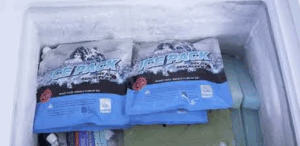 If you’re flying with your catch, verify your airline’s regulations ahead of time. Most airlines allow gel-based ice packs in both checked and carry-on luggage as long as they are fully frozen at the time of security screening. Avoid loose ice, as melted water can cause issues during inspection. For long trips or flights, use several large gel ice packs rather than smaller ones—they retain cold for extended periods and help stabilize the temperature inside your cooler. Make sure your cooler seals tightly and is labeled with your contact information and the contents (for example, “Frozen Fish – Perishable”).
If you’re flying with your catch, verify your airline’s regulations ahead of time. Most airlines allow gel-based ice packs in both checked and carry-on luggage as long as they are fully frozen at the time of security screening. Avoid loose ice, as melted water can cause issues during inspection. For long trips or flights, use several large gel ice packs rather than smaller ones—they retain cold for extended periods and help stabilize the temperature inside your cooler. Make sure your cooler seals tightly and is labeled with your contact information and the contents (for example, “Frozen Fish – Perishable”).
Once you reach your destination, move the fish into a refrigerator or freezer immediately. If properly cleaned, sealed, and chilled with quality ice packs, your fish will arrive as fresh as the moment you caught it. Careful preparation and the right cooling method protect both the quality of your catch and the satisfaction of enjoying it long after your fly-fishing adventure ends.
 The trip begins in the winter months, deep in the snow-covered backcountry, where skilled guides lead cougar hunts in some of the most remote and beautiful country in the lower 48. Idaho is one of the few states that still allows traditional mountain lion hunting with trained hounds—a time-honored method that involves tracking cats through fresh snowfall on horseback or snowmobiles. This is not a passive hunt; it demands endurance, determination, and respect for the animal. The chase often leads through steep ridges, across frozen creeks, and deep into wilderness territory, with the ultimate reward being not just a successful harvest, but the unforgettable experience of testing one’s grit in raw, unforgiving terrain. For many, an
The trip begins in the winter months, deep in the snow-covered backcountry, where skilled guides lead cougar hunts in some of the most remote and beautiful country in the lower 48. Idaho is one of the few states that still allows traditional mountain lion hunting with trained hounds—a time-honored method that involves tracking cats through fresh snowfall on horseback or snowmobiles. This is not a passive hunt; it demands endurance, determination, and respect for the animal. The chase often leads through steep ridges, across frozen creeks, and deep into wilderness territory, with the ultimate reward being not just a successful harvest, but the unforgettable experience of testing one’s grit in raw, unforgiving terrain. For many, an 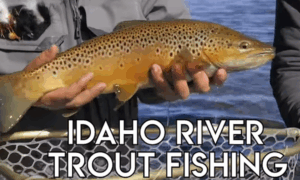 After the intensity of the hunt, the itinerary flows naturally into the calming rhythm of fly fishing for trout in one of Idaho’s legendary rivers. The Salmon River, Henry’s Fork, and Silver Creek offer world-class fishing amidst spectacular scenery. Whether drifting a dry fly across a glassy pool at sunrise or casting from the bank in the fading light of evening, the angler becomes part of a timeless dance between human and fish. Rainbow, brown, and cutthroat trout fill these waters, and for those willing to hike a little farther or float into remote sections, the chance to land a trophy-sized fish is very real. There’s a meditative quality to fly fishing that provides the perfect counterbalance to the physical demands of hunting—requiring patience, focus, and a deep awareness of the environment.
After the intensity of the hunt, the itinerary flows naturally into the calming rhythm of fly fishing for trout in one of Idaho’s legendary rivers. The Salmon River, Henry’s Fork, and Silver Creek offer world-class fishing amidst spectacular scenery. Whether drifting a dry fly across a glassy pool at sunrise or casting from the bank in the fading light of evening, the angler becomes part of a timeless dance between human and fish. Rainbow, brown, and cutthroat trout fill these waters, and for those willing to hike a little farther or float into remote sections, the chance to land a trophy-sized fish is very real. There’s a meditative quality to fly fishing that provides the perfect counterbalance to the physical demands of hunting—requiring patience, focus, and a deep awareness of the environment.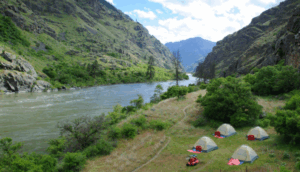 To round out the adventure, the ultimate outdoorsman spends several days on foot, exploring Idaho’s untamed backcountry. The Sawtooth Wilderness, Frank Church–River of No Return Wilderness, and the Bitterroot Mountains offer endless trails that pass through pristine alpine lakes, dense forests, and panoramic ridgelines. These hikes are not only great for scouting future hunting or fishing spots but also allow time to reflect on the journey itself. Nights spent under the stars, meals cooked over a fire, and the complete disconnection from modern life are what make this itinerary not just a trip—but a spiritual reset. For the outdoorsman who lives for the wild, Idaho delivers an unmatched experience: the chase of the cougar, the rise of a trout, and the whisper of the wind through the pines. This is the ultimate journey, where every moment is earned, and every memory lasts a lifetime.
To round out the adventure, the ultimate outdoorsman spends several days on foot, exploring Idaho’s untamed backcountry. The Sawtooth Wilderness, Frank Church–River of No Return Wilderness, and the Bitterroot Mountains offer endless trails that pass through pristine alpine lakes, dense forests, and panoramic ridgelines. These hikes are not only great for scouting future hunting or fishing spots but also allow time to reflect on the journey itself. Nights spent under the stars, meals cooked over a fire, and the complete disconnection from modern life are what make this itinerary not just a trip—but a spiritual reset. For the outdoorsman who lives for the wild, Idaho delivers an unmatched experience: the chase of the cougar, the rise of a trout, and the whisper of the wind through the pines. This is the ultimate journey, where every moment is earned, and every memory lasts a lifetime.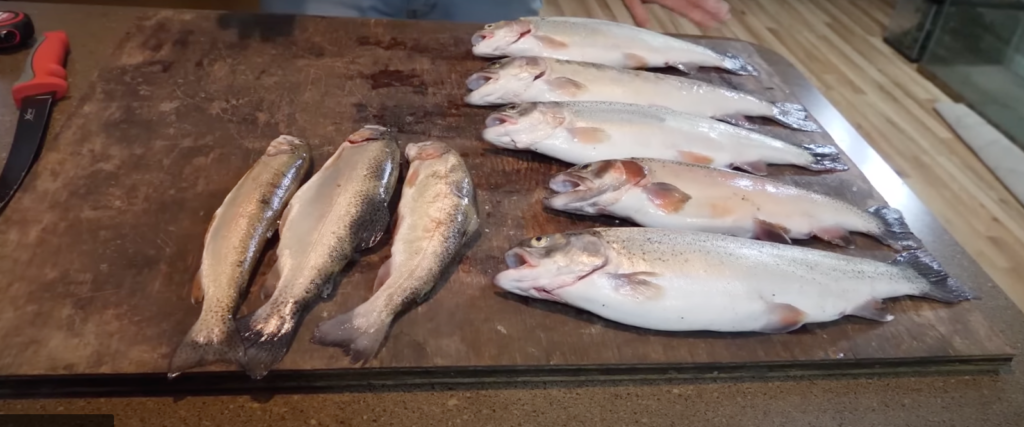
 For those who enjoy easy cooking methods, the Instant Pot is a game-changer. Using the air fryer lid (if you have an Instant Pot with this feature), you can achieve a crisp and juicy trout without the need for a traditional grill or stovetop. Simply season your wild-caught trout and place it on the air fryer rack or basket. Set the Instant Pot to the air fryer function at 375°F and cook for about 8–10 minutes, depending on the size of the fish. This method creates a crispy exterior while keeping the inside tender and moist, much like grilling but without needing an outdoor grill.
For those who enjoy easy cooking methods, the Instant Pot is a game-changer. Using the air fryer lid (if you have an Instant Pot with this feature), you can achieve a crisp and juicy trout without the need for a traditional grill or stovetop. Simply season your wild-caught trout and place it on the air fryer rack or basket. Set the Instant Pot to the air fryer function at 375°F and cook for about 8–10 minutes, depending on the size of the fish. This method creates a crispy exterior while keeping the inside tender and moist, much like grilling but without needing an outdoor grill.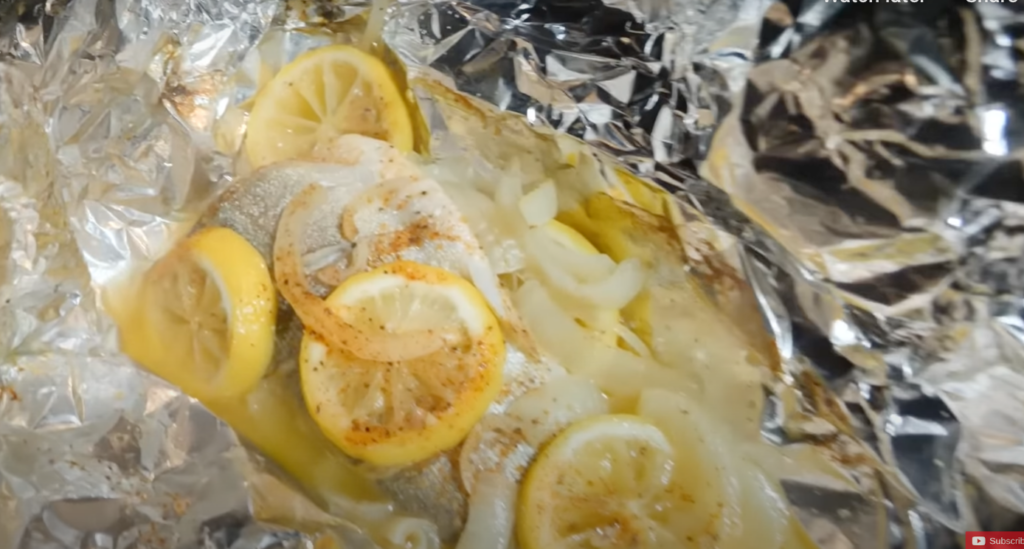
 A lot of people cannot think of a better way to spend a lazy Saturday or Sunday than being out on the water sinking hooks and catching fish. It is perhaps one of the most enjoyable things to do if you enjoy kicking back with a cold one and spending time with friends. It can also give you an enjoyable way to spend the day with your family and it is something that all kids seem to enjoy. That is why there are so many fishing ideas for the whole family available for those who want to introduce their kids to the finer side of life; the stress-free side.
A lot of people cannot think of a better way to spend a lazy Saturday or Sunday than being out on the water sinking hooks and catching fish. It is perhaps one of the most enjoyable things to do if you enjoy kicking back with a cold one and spending time with friends. It can also give you an enjoyable way to spend the day with your family and it is something that all kids seem to enjoy. That is why there are so many fishing ideas for the whole family available for those who want to introduce their kids to the finer side of life; the stress-free side.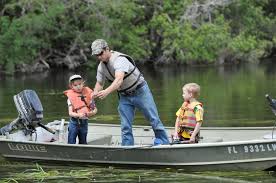 Fishing with the family will give you a chance to bond with one another away from the house where there are computers, tablets, phones, and television sets. It gives you a place that you can go with your family and laugh or talk about the tougher things that most all of us cannot find the time to talk about during the busy work weeks. This will allow them to explore the world and you can take it a step further by giving kids a reason to learn how to “swim like a fish” or see the world “through a fish’s eyes”. Little ones will often start imagining they are a fish in the tub when they come off a day on the water.
Fishing with the family will give you a chance to bond with one another away from the house where there are computers, tablets, phones, and television sets. It gives you a place that you can go with your family and laugh or talk about the tougher things that most all of us cannot find the time to talk about during the busy work weeks. This will allow them to explore the world and you can take it a step further by giving kids a reason to learn how to “swim like a fish” or see the world “through a fish’s eyes”. Little ones will often start imagining they are a fish in the tub when they come off a day on the water.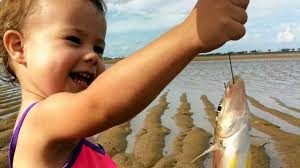 It is a sad truth, but many parents miss out on it because they put off going fishing with their child until the child is old enough to hold a rod and cast a reel. They do it for the right reasons in most cases. However, it is unnecessary. Even small children can gain from a day of fishing. You simply have to take along things to keep boredom at bay, since every true fisherman knows that not all fish bite when you want them to. Books to read, small toys to play with, and a blanket for nap-time if the sun and fun relax them a little too much. For nap-time, if you do not want to have a blanket or there isn’t enough space on board the boat for it, you can choose a carrier that is waterproof for them to relax in. Many of them offer covers to protect them from sunburns as well.
It is a sad truth, but many parents miss out on it because they put off going fishing with their child until the child is old enough to hold a rod and cast a reel. They do it for the right reasons in most cases. However, it is unnecessary. Even small children can gain from a day of fishing. You simply have to take along things to keep boredom at bay, since every true fisherman knows that not all fish bite when you want them to. Books to read, small toys to play with, and a blanket for nap-time if the sun and fun relax them a little too much. For nap-time, if you do not want to have a blanket or there isn’t enough space on board the boat for it, you can choose a carrier that is waterproof for them to relax in. Many of them offer covers to protect them from sunburns as well. Part of the joy of fly fishing comes in when you are in a scenic spot, calf deep in the water, whipping your line out over the water, and truly becoming one with nature. It is peaceful, it is quiet, and relaxing for the soul. Then, you get a nibble on your line and you start to reel it in to see what size fish you just managed to catch. It is everything you could ever want from a day out in the wilds, but now there are people who have figured out a way to add even more calming fun to their day of fishing. Would you consider going on fly fishing float boat trips?
Part of the joy of fly fishing comes in when you are in a scenic spot, calf deep in the water, whipping your line out over the water, and truly becoming one with nature. It is peaceful, it is quiet, and relaxing for the soul. Then, you get a nibble on your line and you start to reel it in to see what size fish you just managed to catch. It is everything you could ever want from a day out in the wilds, but now there are people who have figured out a way to add even more calming fun to their day of fishing. Would you consider going on fly fishing float boat trips?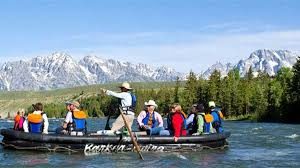 Float boating is a common activity on lazy, slow flowing rivers. It allows people to drift down the stream, taking in the scenery, and relaxing. When combined with fly fishing, it allows you to cover more areas of a river, which increases your chance of success. You are not stuck on a bank with only the fish that are in that area to catch. Instead, you are drifting past numerous fish and fish holes. When combined with fly fishing and whipping your bait across the water, the potential is limitless.
Float boating is a common activity on lazy, slow flowing rivers. It allows people to drift down the stream, taking in the scenery, and relaxing. When combined with fly fishing, it allows you to cover more areas of a river, which increases your chance of success. You are not stuck on a bank with only the fish that are in that area to catch. Instead, you are drifting past numerous fish and fish holes. When combined with fly fishing and whipping your bait across the water, the potential is limitless.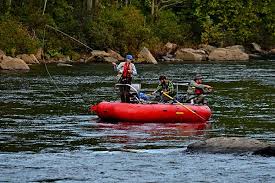 When float boating, you generally want to use a canoe, kayak, or river raft. These boats are light enough to flow downstream and then carry back to your starting point if you need to. They are also quiet on the water, can be paddled with ease, and sit on the water instead of deep like a motor boat. The purpose of a float trip is to cause as little disturbance as possible while covering the most amount of river. In the event that you go floating in a long river, you have the option to have a trolling motor on-board, but most people prefer to carry the boat or paddle back upstream so that they do not disturb other floaters. If you want a trolling motor, there are some that are quieter, and you would be wise to choose them. It can also be more effective if you have a dependable battery to power it. This can be affordable if you choose an inexpensive marine battery. One bonus to having a trolling motor is that it could allow you to fish later in the day or drift further downstream since you won’t have to carry your raft back.
When float boating, you generally want to use a canoe, kayak, or river raft. These boats are light enough to flow downstream and then carry back to your starting point if you need to. They are also quiet on the water, can be paddled with ease, and sit on the water instead of deep like a motor boat. The purpose of a float trip is to cause as little disturbance as possible while covering the most amount of river. In the event that you go floating in a long river, you have the option to have a trolling motor on-board, but most people prefer to carry the boat or paddle back upstream so that they do not disturb other floaters. If you want a trolling motor, there are some that are quieter, and you would be wise to choose them. It can also be more effective if you have a dependable battery to power it. This can be affordable if you choose an inexpensive marine battery. One bonus to having a trolling motor is that it could allow you to fish later in the day or drift further downstream since you won’t have to carry your raft back. Dedicated fishermen know that there is nothing better than heading off on a big fishing trip. It is exciting to head off to new areas and see what fish are available there, but it also takes a lot of preparation; especially if you are going fly fishing in the west. The best time to plan is before you go because once you get there, you will not want to waste time searching for the right gear and other things. Are you ready to make the fly fishing trip preparations that you need to make?
Dedicated fishermen know that there is nothing better than heading off on a big fishing trip. It is exciting to head off to new areas and see what fish are available there, but it also takes a lot of preparation; especially if you are going fly fishing in the west. The best time to plan is before you go because once you get there, you will not want to waste time searching for the right gear and other things. Are you ready to make the fly fishing trip preparations that you need to make?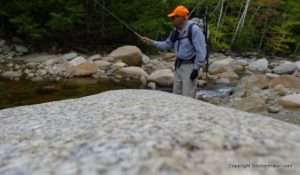 Each year, you should try to plan a trip for yourself that exposes you to new areas. These new areas may not replace your old favorite spot, but it can go a long way in helping you stay on top of your game. You can practice new fly fishing techniques and more, but it does take planning before you head off to Montana, Wyoming, Idaho, and other areas. You will need the proper clothing, proper footwear, and a variety of other things to keep you comfortable. Your most favorite fly fishing rod and reel and your different lures so that you can try out a variety of baits should be one of the first things you gather up.
Each year, you should try to plan a trip for yourself that exposes you to new areas. These new areas may not replace your old favorite spot, but it can go a long way in helping you stay on top of your game. You can practice new fly fishing techniques and more, but it does take planning before you head off to Montana, Wyoming, Idaho, and other areas. You will need the proper clothing, proper footwear, and a variety of other things to keep you comfortable. Your most favorite fly fishing rod and reel and your different lures so that you can try out a variety of baits should be one of the first things you gather up. If you are fishing in the winter, heavy clothes are best. During the summer, you will want to keep it light. You will want to wear polarized sun glasses either way because it will protect your eyes and allow you to see the areas that fish may be hiding. Prescription medications, snacks to eat, water to drink, and all other things will ensure that you are comfortable when fishing the streams out west. You will also want to do what you can to eliminate the flies that may be near the water because even though you are fly fishing, you still will not want to be bugged by them. For that, you may need to find out from locals what keeps flies away outside.
If you are fishing in the winter, heavy clothes are best. During the summer, you will want to keep it light. You will want to wear polarized sun glasses either way because it will protect your eyes and allow you to see the areas that fish may be hiding. Prescription medications, snacks to eat, water to drink, and all other things will ensure that you are comfortable when fishing the streams out west. You will also want to do what you can to eliminate the flies that may be near the water because even though you are fly fishing, you still will not want to be bugged by them. For that, you may need to find out from locals what keeps flies away outside. Fishing is a sport that most people enjoy taking part in. There are fishermen who love deep sea fishing and those that prefer a fresh water pond or rivers. To that same extent, there are also people who love to go fishing with a rod and reel, and then there are those who enjoy fly fishing. Both are challenging, but there are many who say that fly fishing is truly an artform. If you haven’t given fly fishing a try, we recommend that you consider doing it, especially if you live out west.
Fishing is a sport that most people enjoy taking part in. There are fishermen who love deep sea fishing and those that prefer a fresh water pond or rivers. To that same extent, there are also people who love to go fishing with a rod and reel, and then there are those who enjoy fly fishing. Both are challenging, but there are many who say that fly fishing is truly an artform. If you haven’t given fly fishing a try, we recommend that you consider doing it, especially if you live out west.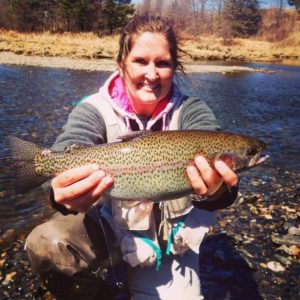 The most common fish that are caught with a fly include trout, grayling, and salmon, but this is not all inclusive. There are fly fishers trying their luck at catching a lot of different types of fish. They can often catch bass, pike, and panfish in fresh water. In saltwater, there have been people who have caught snook, bone fish, stripped bass, and redfish, but some of the more adventurous fly fishermen have tackled tuna, sharks, and marlins.
The most common fish that are caught with a fly include trout, grayling, and salmon, but this is not all inclusive. There are fly fishers trying their luck at catching a lot of different types of fish. They can often catch bass, pike, and panfish in fresh water. In saltwater, there have been people who have caught snook, bone fish, stripped bass, and redfish, but some of the more adventurous fly fishermen have tackled tuna, sharks, and marlins.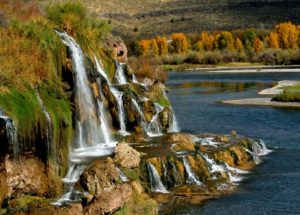 Montana offers a variety of great fishing rivers, but there are many other areas all over the western part of the United States. They include places like Snake River, which is located in Idaho and Lake Tahoe, especially if you visit one of the feeder creeks. Yosemite is home to the Merced River, which is well known for its abundant brown trout. It is also a place that offers an excellent array of scenery and wildlife outside of the river. Many people enjoy fly fishing in Yellowstone National Park and any number of other places. Basically, every state that has flowing rivers or ponds can be enjoyable fishing spots in the western part of the US. However, if you choose to fish a still pond, you may need to paddle out where the water is cooler if you want to have a successful fishing trip. You should also look for drop-offs, weeds, and other areas that could cause transitional waters.
Montana offers a variety of great fishing rivers, but there are many other areas all over the western part of the United States. They include places like Snake River, which is located in Idaho and Lake Tahoe, especially if you visit one of the feeder creeks. Yosemite is home to the Merced River, which is well known for its abundant brown trout. It is also a place that offers an excellent array of scenery and wildlife outside of the river. Many people enjoy fly fishing in Yellowstone National Park and any number of other places. Basically, every state that has flowing rivers or ponds can be enjoyable fishing spots in the western part of the US. However, if you choose to fish a still pond, you may need to paddle out where the water is cooler if you want to have a successful fishing trip. You should also look for drop-offs, weeds, and other areas that could cause transitional waters.